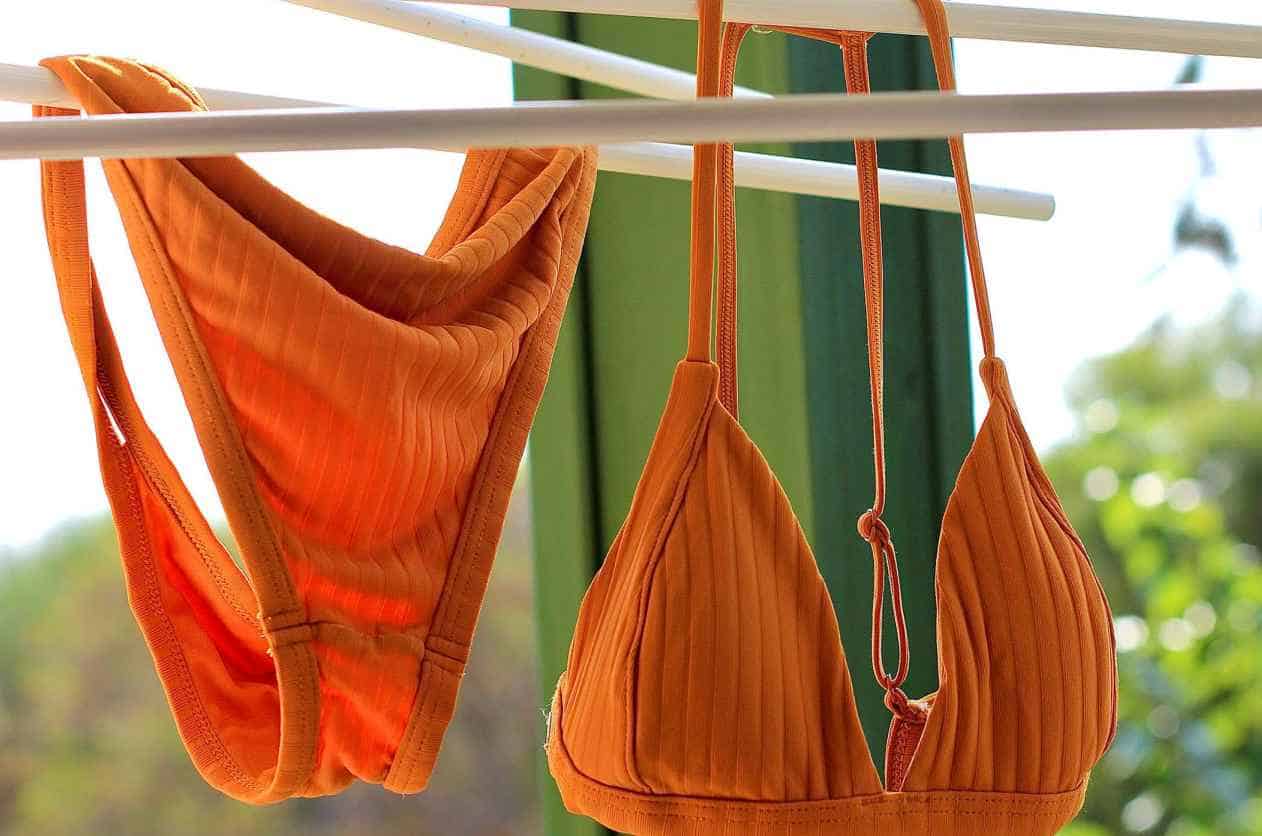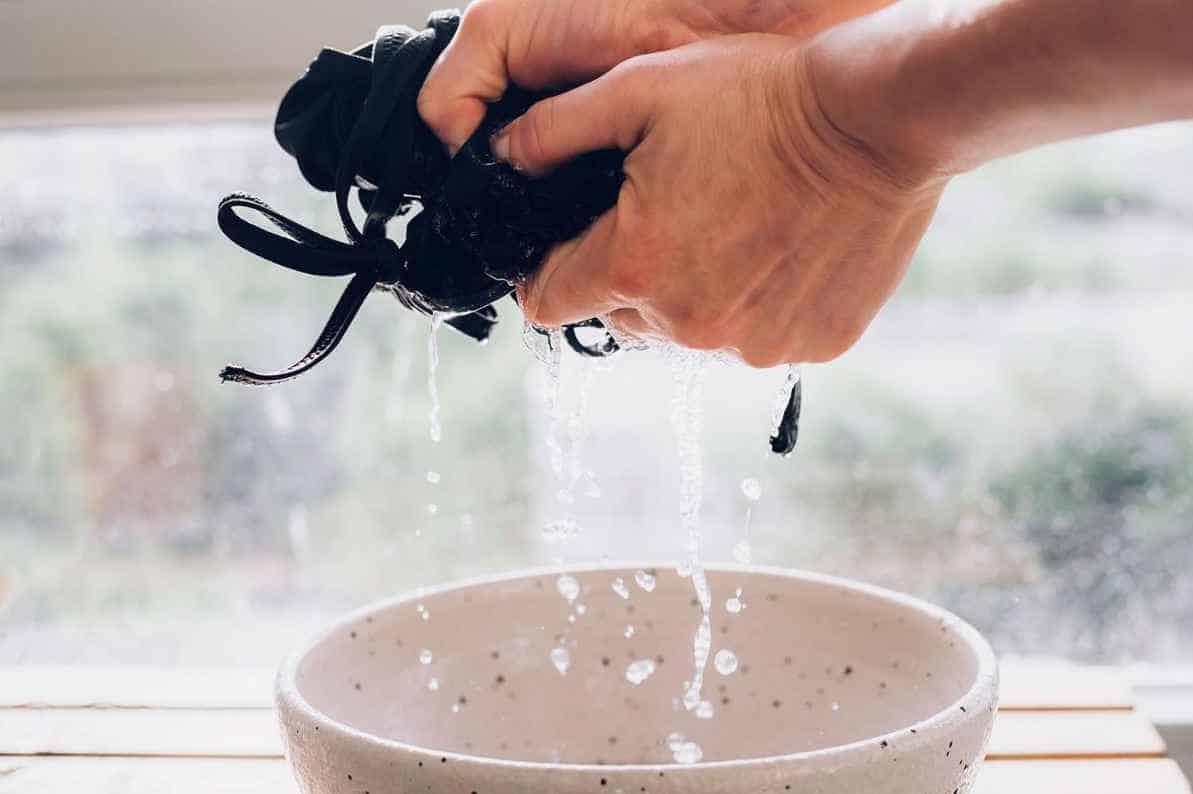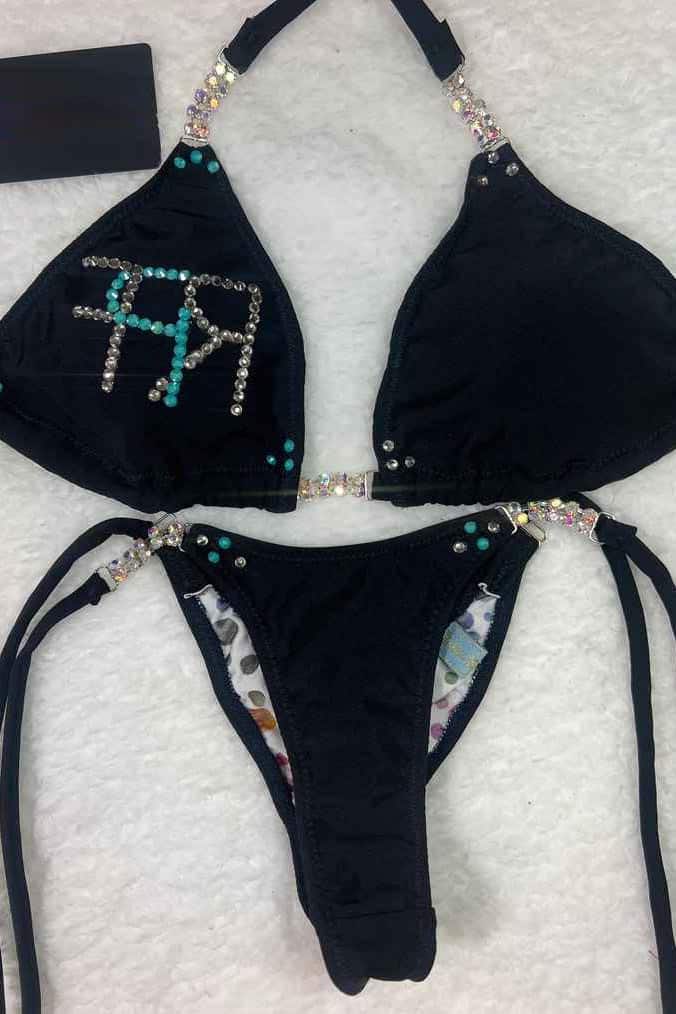The hot summer months are around the corner! Several of us want to dip in the pool or beach for a fun and refreshing outdoor activity. But after the fun, responsibility kicks in – you must wash your bathing suits properly.
How Often and How Should You Wash Your Bathing Suit
Washing your bathing suits after each use removes lingering salt, sand, chlorine, or sweat on the fabric. If bathing suits are neglected after each use, the fabric becomes a breeding ground for bacteria, which leads to skin irritations and infections. That’s why it is essential to wash your bathing suits to keep them clean, hygienic, and in good condition.
But how often should you wash your bathing suit? It is essential to wash your bathing suit immediately after every use. However, if your time does not permit, you can pre-rinse it thoroughly to remove any chlorine or salt water and wash it as soon as possible. Do not wear the same unwashed bathing suit.
If you are wondering how to wash your bathing suit properly, the following sections will discuss the proper techniques and tips for washing different types of bathing suits and how to maintain their quality and extend their lifespan.
Before you start washing your bathing suit, check its wash label first. Several bathing suits have specific instructions for washing. Some have “hand wash only”, while others may recommend using gentle detergents. Follow the label’s instructions to avoid any possible damage to your bathing suit.
How to Handwash Bathing Suits
Most bathing suits do not recommend machine washing because of their delicate fabrics. If your bathing suits are labelled with “hand wash”, this is how you can effectively handwash them.
- Rinse the bathing suit with cold water: Rinse your swimsuit with cold water to remove any chlorine, salt, or sand that may have accumulated during your last swim. Do this until the water runs clear. You can gently wring the swimsuit to remove excess water, but do not twist or pull it to avoid damaging its fibers.
- Use a small amount of gentle detergent: Fill a tub with cold water and add a small amount of gentle laundry detergent. Swirl the water to create suds. Do not use too much detergent, as it may leave residue on your swimsuit.
- Soak swimsuit: Completely submerge the swimsuit in the tub and let it soak for 15 to 30 minutes. Soaking your swimsuit helps loosen dirt and oils from the fabric.
- Gently wash swimsuit: After soaking, gently wash the swimsuit with your hands. Use a soft and gentle touch. Do not rub or scrub the swimsuit too hard. Pay attention to the areas where the swimsuit has stubborn stains or soil. If necessary, you can use a soft-bristled brush to scrub the fabric gently.
- Rinse thoroughly: Rinse the swimsuit with cold water. Ensure to remove all the traces of detergent from the fabric. Gently squeeze the excess water, and do not twist or pull the fabric.
- Dry swimsuit: You can lay the swimsuit flat on a clean towel, roll the towel and swimsuit, and gently press it to remove excess water. Transfer the swimsuit to another clean and dry towel. If this is a lot of work, you can air dry it in a well-ventilated room. Do not place it under direct sunlight to prevent the fabric from stretching.
How to Machine Wash Bathing Suits
Machine washing is not typical for swimsuits; it may damage their delicate fabrics and fibers. But if your swimsuit is compatible with machine washing, you can follow these steps.
- Choose a gentle cycle: Set your washer to a delicate or gentle cycle to avoid any damage and protect the fabrics of your swimsuit.
- Use mild detergent: Always use a mild detergent that does not have bleach or fabric softener. Harsh detergents may break down the elasticity and damage the fibers of your swimsuit. It may also cause fading or stretching.
- Wash separately: Do not wash your swimsuit with regular clothes. It may cause snagging or stretching. It is best to wash your swimsuit alone or with similar types of clothes.
- Wash at a cool temperature: Always use cold water when dealing with swimsuits. Hot water may cause fading, shrinking, or damage to the swimsuit’s elasticity.
- Air dry swimsuit: Avoid using a dryer to dry your swimsuit, as the heat can damage the fibers and cause shrinking. Air dry your swimsuit in a well-ventilated area, but make sure it is away from direct sunlight.
These are the general method of washing your bathing suit. However, bathing suits are made from different types of materials. From delicate fabrics to durable blends, each material has special instructions.
Tips for Washing Different Types of Bathing Suits
Some bathing suits are made of different materials, which requires additional care to ensure you can maintain their optimum condition. Each bathing suit material needs to be washed with special care to maintain its shape, color, and embellishments.
Polyester and Spandex Blends
Polyester and spandex blends are commonly used for bathing suits. These materials make the suits stretchy, lightweight, and quick-drying. Just like the general guidelines discussed above, using warm or hot water when washing your bathing suits will cause the materials to lose their elasticity.
Moreover, you do not have to place your bathing suits in the dryer. You can dry your bathing suits efficiently by laying them flat on a clean towel and letting them air dry. Its quick-drying material helps the fabric dry thoroughly and efficiently.
Nylon and Lycra Blends
Like polyester and spandex blends, the nylon and lycra materials make the bathing suits stretchy, lightweight, and quick-drying. It has the same special instructions as other bathing suits. No warm water, dryer, and use only gentle detergents.
Swimsuits with Embellishments
Swimsuits with embellishments like beads, crystals, or sequins require special care to ensure these decorations remain intact and stay on the fabric even after several wears. The best method of washing swimsuits with embellishments is by handwashing. Machine washing this bathing suit may cause the embellishments to catch on other items, causing them to fall off.
Neoprene Wetsuits
Neoprene wetsuits are made of synthetic rubber, making them stretchy, insulated, and waterproof. These features make it durable and can withstand the wear and tear of any water sport. However, besides its durability, it still requires special care to avoid damaging its materials. Use cold water and mild soap or wetsuit cleaner to wash your neoprene wetsuit.
Best Way to Dry Bathing Suits
Do not hang your swimsuit to dry, as it will stretch out the fabric, causing it to lose shape.
The best way to dry your bathing suit is to lay it flat on a clean towel. You can leave it to air dry or speed up the drying process by gently rolling the dry towel and swimsuit to let out excess water. Do not place the swimsuit under direct sunlight, as it will fade the color and weaken its elasticity.
Common Mistakes to Avoid in Washing a Bathing Suit
People often commit mistakes when washing their bathing suits. These common mishaps should be prevented to ensure swimsuits stay in good condition and last several wears.
- Using hot water: Hot water can damage the fibers of your swimsuit. It causes the fabric to lose its elasticity. That’s why you should always wash your bathing suits in cool water.
- Applying bleach or using harsh detergents: The chemicals in harsh detergents, bleach, and fabric softeners can damage the fabric and causes it to break down. Use gentle detergents specifically formulated for delicate clothes, including your bathing suit.
- Wrinkling or twisting the bathing suit: We are almost accustomed to wringing or twisting the swimsuit after rinsing or drying. This causes the fabric to stretch out and lose its shape.
- Drying the bathing suit in direct sunlight: Do not put your bathing suit under direct sunlight. It will cause fading and stretching.
- Putting the swimsuit into the dryer: Just like you should not wash your swimsuit with hot or warm water, do not put your swimsuit in the dryer. The heat and tumbling action will damage its fiber and causes it to lose shape.
Lastly, do not leave your swimsuit wet in a pile or your bag. It will cause molds and mildew to grow on the fabric and develop an odor. Always rinse the suit after use and air dry it immediately.
Should you bring your bathing suit to the dry cleaners?
Absolutely, no. It is not recommended to bring your bathing suits to the dry cleaner. Dry cleaning uses chemicals, which can damage the delicate fabrics and embellishments on your bathing suits.
Only follow the care instructions on your bathing suit and the methods discussed earlier in this article.
Final Takeaway
Wash your bathing suits properly to make them look great and last for several swimming seasons. Always handwash them in cold water and mild detergent. Following the guidelines on how to wash them properly keeps them in good condition and ready for your next beach or pool day.

Jessica Oliver is a fashion enthusiast with more than ten years of experience in the industry. She previously managed her own clothing store in New York before becoming a mother of three. With a passion for sustainability and a desire to share clothing care and recycling tips.








